#bronze artifacts
Explore tagged Tumblr posts
Text


Ancient Roman Bronze Bird Finial 2nd century AD
#Ancient Roman Bronze Bird Finial#2nd century AD#bronze#bronze artifacts#ancient artifacts#archeology#archeolgst#history#history news#ancient culture#ancient history#ancient civilizations#ancient rome#roman history#roman empire#roman art
110 notes
·
View notes
Text

Sumerian/Mesopotamian Amulet Seal in the Form of a Bull, c. 3250 BCE.
#history#archaelogy#artifacts#art history#old art#art#statue#ancient history#bronze age#iron age#neolithic#mesopotamia#sumerian#iraqi#historical#cute#ancient civilizations
15K notes
·
View notes
Text
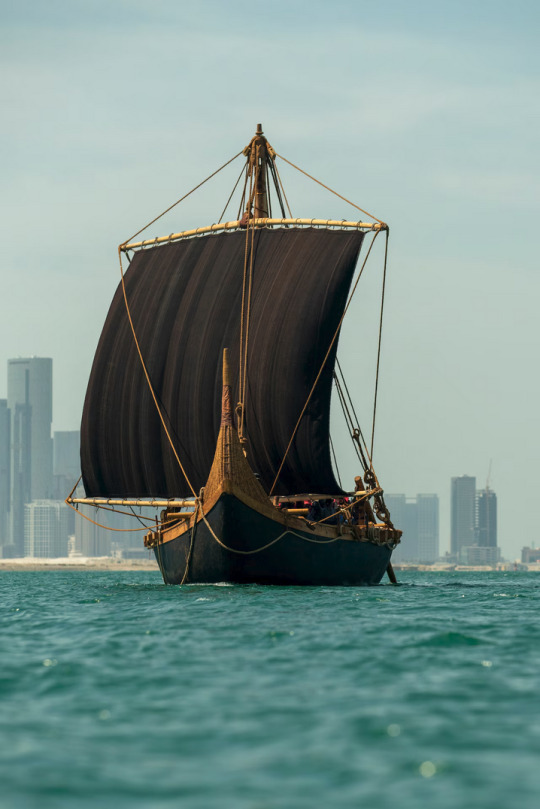
For the first time in millennia, a Magan Boat sails off the coast of Abu Dhabi. It’s a reconstruction that has taught the world much about the skill and achievements of Bronze Age sailors
Archaeology on Marawah Island, west of Abu Dhabi, has revealed that 8,000 years ago the Arabian coast was home to a sophisticated seafaring people. They built stone structures, herded livestock, fished and dived for pearls, crafted jewelry, and developed a talent for sailing that started a remarkable cultural exchange.
By the Bronze Age, around 4,500 years ago, the region was prominent enough to have a name in ancient writings: Magan. From the island of Umm an-Nar, in modern Abu Dhabi which was part of ancient Magan, merchants sailed an international trade route that connected Mesopotamia, in what is now Iraq, to the Indus Valley in today’s India and Pakistan. Magan traded locally sourced pearls, stone and copper, one of the most sought-after commodities of the time, for ceramics, fabrics, jewelry, and other precious objects. Its ships were renowned through the Arabian Gulf.
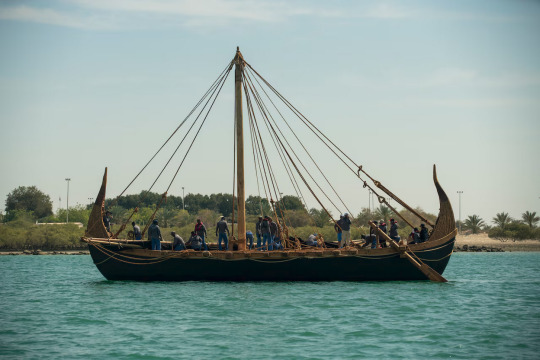
The ship was built using 15 tons of locally sourced reeds that were painstakingly prepared by being soaked, stripped of leaves, crushed, and then tied into bundles using rope made from date palm fibers. These formed the hull, to which was attached a wooden frame. The boat’s dimensions were calculated based on what is known about similar vessels as well as hydrostatic analysis of what was needed to make it float. The reed hull was then waterproofed with a coating of bitumen, which was traded from Iraq. The heavy sail, raised purely by muscle without the benefit of pulleys, was crafted of goat’s hair in a patchwork of shades.
The result was the world’s largest ever reconstructed Bronze Age vessel: 60 feet long, capable of carrying 36 tons of cargo, and achieving surprisingly high speeds of 5.6 knots.
#naval history#naval artifacts#archaeology#magan boat#around 2350 BC#bronze age#replica#ancient seafaring
3K notes
·
View notes
Text


Details of an enormous bronze cauldron discovered a few years ago by French archaeologists near the town of Lavau in a tomb of a Celtic nobleman. The burial dates to around 500 BC and the cauldron itself is of Etruscan or Greek manufacture, showcasing the extensive trade links during the period.
#ancient history#ancient art#lavau grave#grave goods#bronze#bronze cauldron#hallstatt#greek#etruscan#antiquities#ancient civilisations#artifact#archaeology
779 notes
·
View notes
Text
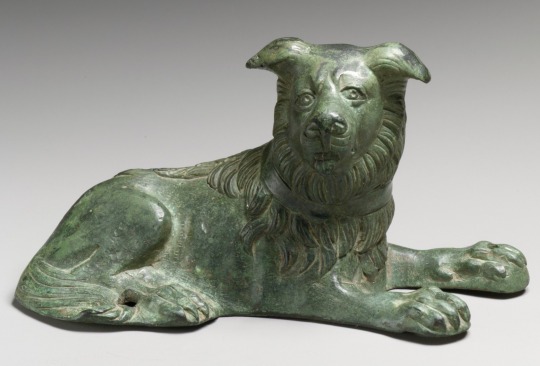
Bronze statuette of a dog
Roman
2nd-3rd century CE
#roman art#dogs#bronze#bronze statue#animals in art#ancient art#ancient people#ancient statue#statue aesthetic#aesthetic#beauty#ancient artifacts#artifacts#antiquities#beautiful animals#dogs of tumblr#cute dogs#modern art#art history#aesthetictumblr#tumblraesthetic#tumblrpic#tumblrpictures#tumblr art#tumblrstyle#artists on tumblr
2K notes
·
View notes
Text
Akhnatens letters

*These are five of the Amarna letters in the british museum
The Amarna letters features letters directed to Akhnaten and before him his father about the fall of conquered terratories in Caanan and Syria to the kingdoms of the Mitanni, the Babylonians and the Hittites.
These letters are featured in the opera Akhnaten in the third act and are transcribed from Samuel A.B Mercers translation from his 1939 book "Mercer, The Tel-el-Amarna Tablets". The book is hard to find so I cannot connect the letters to their correct tablets at this time but I will when I get ahold of the book.
The letters are used to paint a good picture of the severe losses Egypt suffered during Akhnaten and his ancestors reign. His descendants in the 18th dynasty mitigated the issue but the 19th dynasty namely Seti I and Ramesses II probably reclaimed the most.
Letter No. 1: I have written repeatedly for troops, but they were not given and the king did not listen to the word of his servant. And I sent my messenger to the palace, but he returned empty-handed - he brought no troops. And when the people of my house saw this, they rediculed me like the governors, my brethren, and dispised me.
Letter No. 2: The king's whole land, which has begun hostilities with me, will be lost. Behold the territory of Seir, as far as Carmel; its princes are wholly lost; and hostilities prevail against me. As long as ships were upon the sea the strong arm of the king occupied Naharin and Kash, but now the Apiru are occupying the king's cities. There remains not one prince to my lord, the king; every one is ruined. Let the king take care of his land and let him send troops. For if no troops come in this year, the whole territory of my lord, the king, will perish. If there are no troops in this year, let the king send his officer to fetch me and his brothers, that we may die with our lord, the king.
Note: Naharin meant the land of the Mitanni claimed by Thutmose III in his military campaign.
Letter No. 3: Verily, they father did not march forth nor inspect the lands of the vassal-princes. And when thou ascended the throne of thy father's house, Abdashirta's sons took the king's lands for themselves. Creatures of the king of Mittani are they, and of the king of Babylon and of the king of the Hittites.
Letter No. 4 Who formerly could have plundered Tunip without being plundered by Thutmose III? The gods of the king of Egypt, my lord, dwell in Tunip. May my lord ask his old men if this not be so. Now, however, we belong no more to our lord, the king of Egypt. And now Tunip, thy city, weeps and her tears are flowing and there is not help for us. For twenty years we have been sending to our lord, the king of Egypt, but there has not come to us a word - no, not one.
#egyptology#ancient artifacts#hittite empire#ancient civilizations#ancient world#antiquity#archeology#ancient history#ancient artefacts#artefact#akhenaten#opera#philip glass#bronze age#mitanni#egypt#ancient egypt#egyptian history#egyptian#ancient#akhnaten
125 notes
·
View notes
Text

Roman bronze lamp. Dated to the 2nd century CE.
#artifact#antique#antiquity#roman history#roman art#rome#roman mythology#bronze#lamp#2nd century#art history#history#mythology and folklore#toya's tales#style#toyastales#toyas tales#art#classical art#lion#october#fall
191 notes
·
View notes
Text

beads | c. 3200 - 2900 BCE | jericho, palestine
in the royal ontario museum collection
94 notes
·
View notes
Text

Bronze Mirror with a Support in the Form of a Draped Woman
Greek, mid-5th century BCE
368 notes
·
View notes
Text
Beautiful Bronze Age Artifacts: Mesopotamia
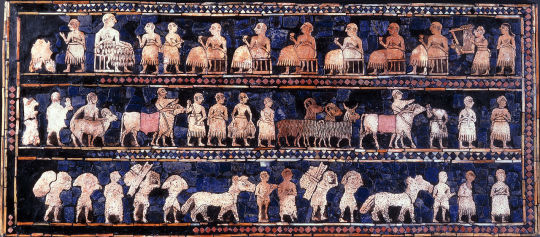



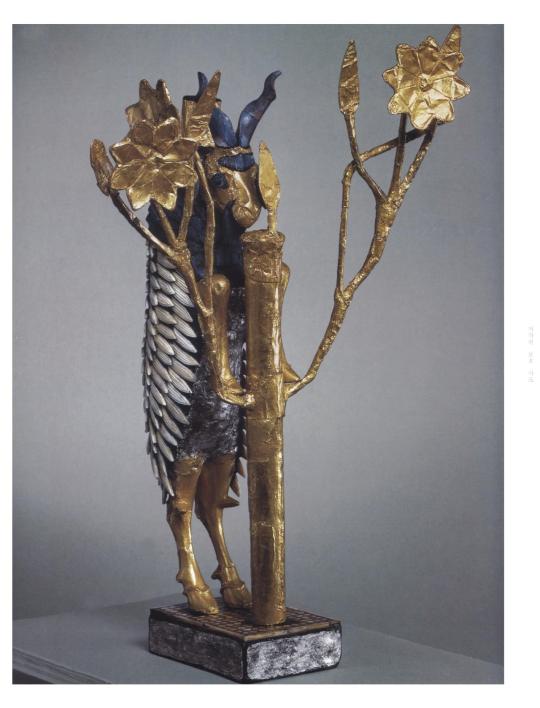
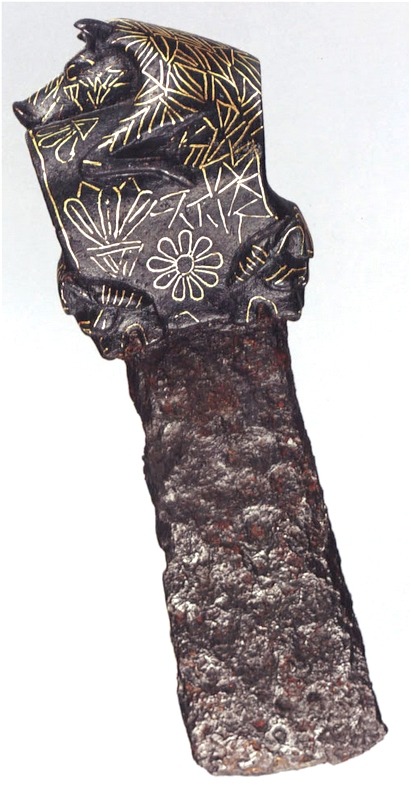
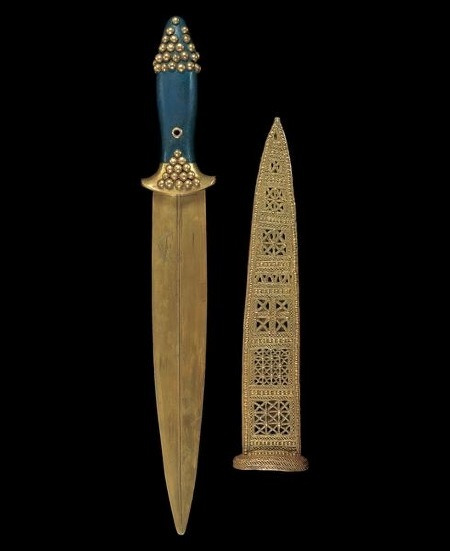
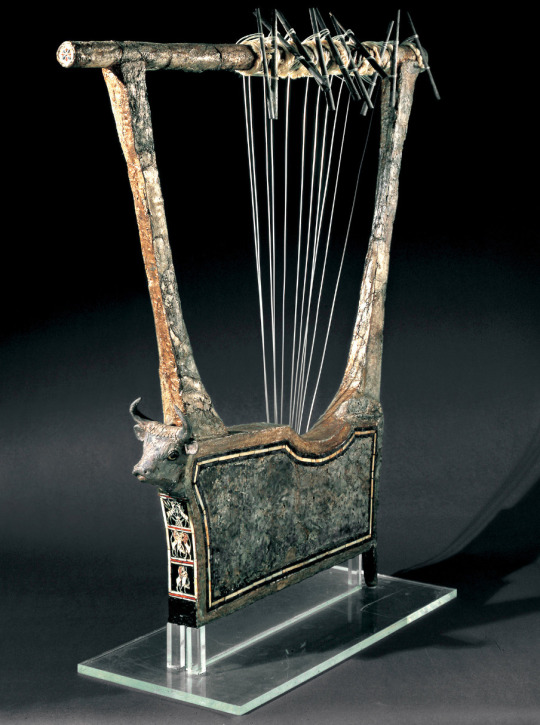
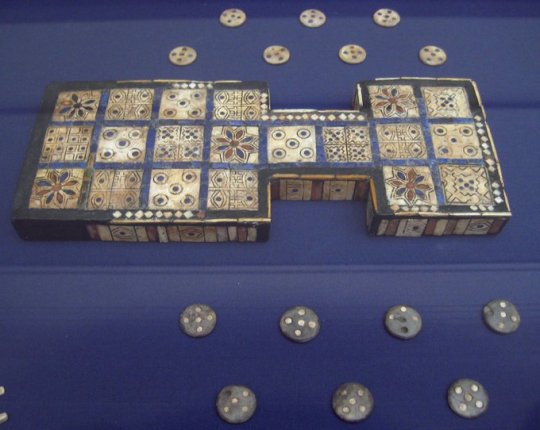
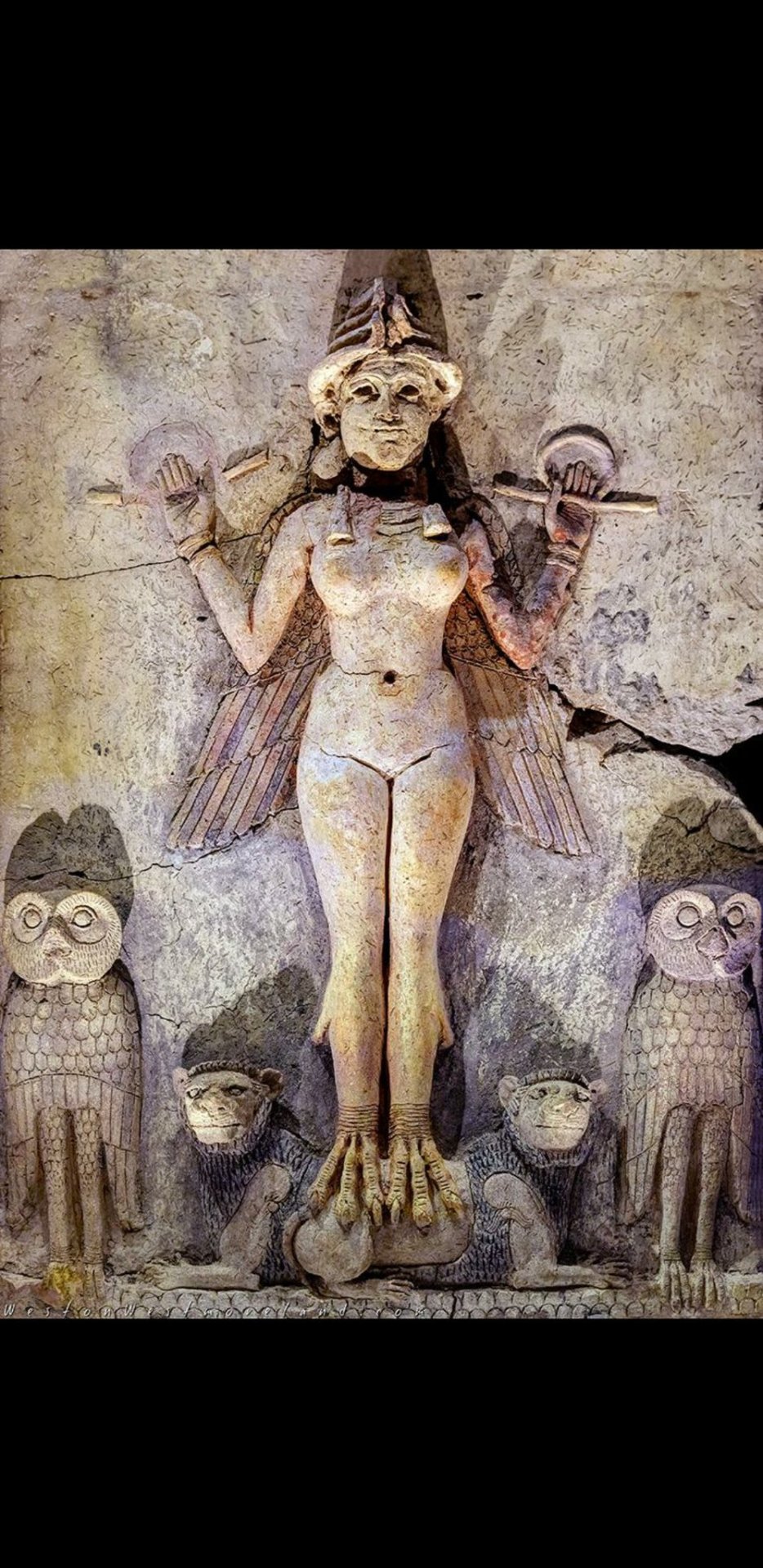
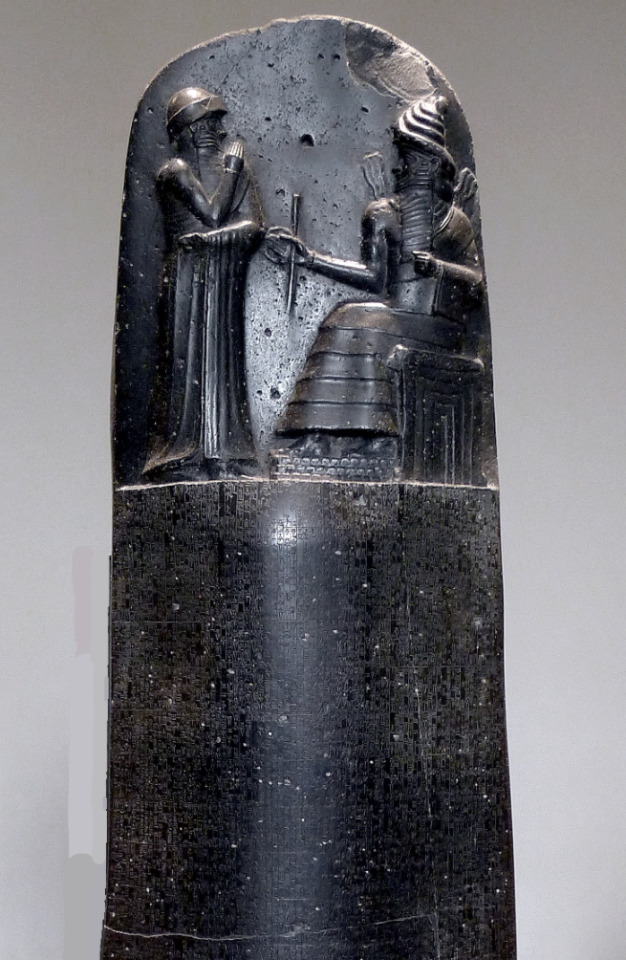
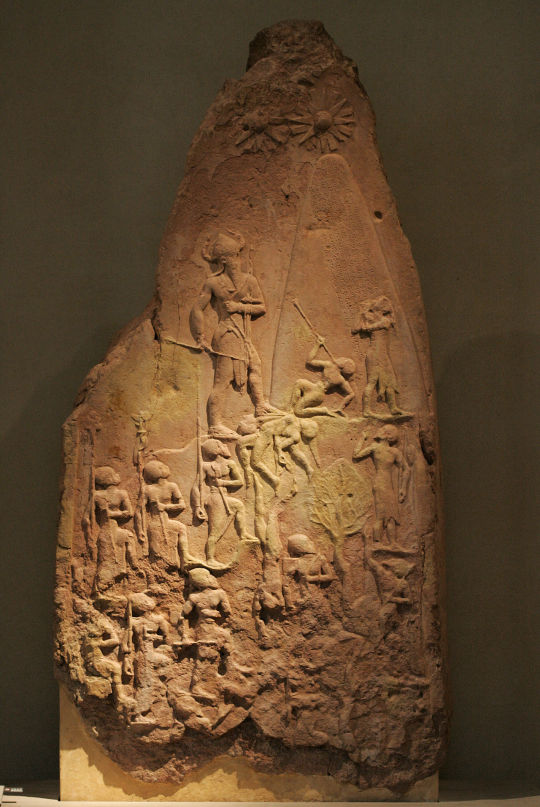
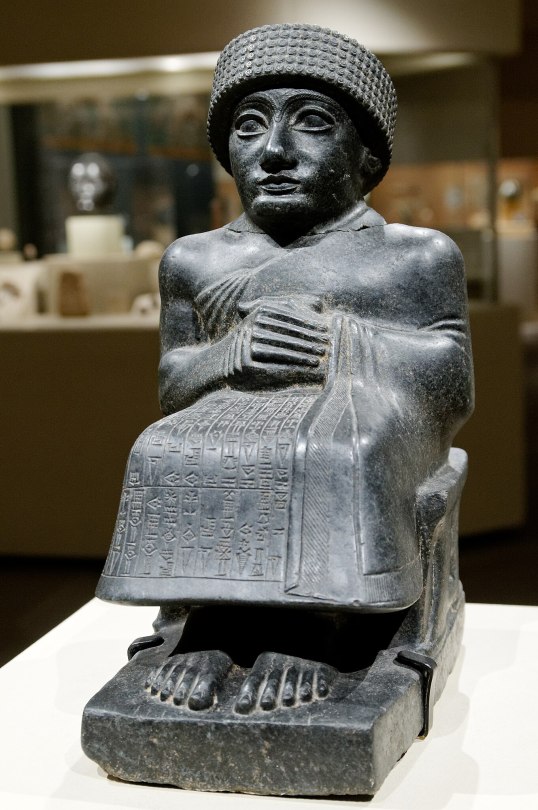

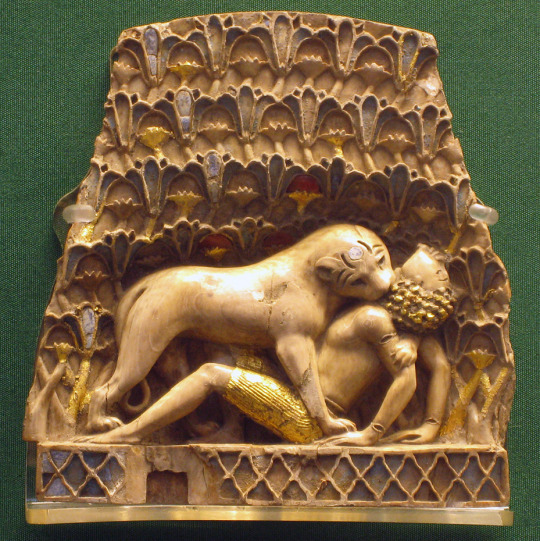
15 notes
·
View notes
Text
"Zeugma Mars" Statue from Turkey, c.250 CE: this statue depicting Mars, the Roman god of war, was unearthed from the ruins of a city that was occupied and plundered by the Sassanids in 253 CE

The bronze figure is nearly 1.5 meters (5 feet) tall. It has a strikingly intense expression, with eyes that are highlighted by gold and silver inlays.

According to this article:
A bronze statue of Mars, the Roman god of war, was found in the ancient city of Zeugma in the course of an excavation campaign in 1999-2000. The statue represents one of the most interesting and spectacular finds from this city on the banks of the Euphrates river in southern Anatolia.

The statue is of great interest on one side for its rarity, as few Roman bronzes of such size are so well preserved, and on the other for its unusual iconography, depicting the standing God as a young athlete. The figure stands with the weight centered on the right leg, while the left, slightly bent, rests only on the flexed toes. The right arm is raised, its hand closed around a spear that has not been found, while the left is bent at the elbow, to almost 90° and with the hand wielding an object that appears to be a scourge with multiple and symmetrical endings.

Beneath the helmet, thick curls frame the face of the young man whose frown is marked by strongly furrowed eyebrows and a very intense gaze, highlighted by silver and gold inlays around the pupils.

A chandelier was found along with the bronze. It is composed of a drum, similar in length to the sculpture, which passes through a disc and is inserted in a base. The small size of the space in which the artifacts were discovered and its place in the general plan of the villa suggests a closet where the precious materials were hidden to escape the pillaging of the city, carried out in 253-6 AD by the Sassanids.
Sources & More Info:
CCA (Centro di Conservazione Archeologica): Zeugma Mars Conservation Project
Journal of Roman Archaeology: The Bronze Mars of Zeugma
Turkish Museums: Time Capsule of Ancient Roman Art: Zeugma
Packard Humanities Institute: The Rescue Excavations at Zeugma in 2000 (PDF)
UNESCO: The Archaeological Site of Zeugma
Archaeological Institute of America: Troubled Waters
Archaeology Magazine: Zeugma After the Flood
#archaeology#artifact#history#anthropology#zeugma#turkey#anatolia#roman art#mars#god of war#ares#roman pantheon#paganism#ancient art#statue#bronze#classical antiquity#religion#art#sculpture#conservation
37 notes
·
View notes
Text
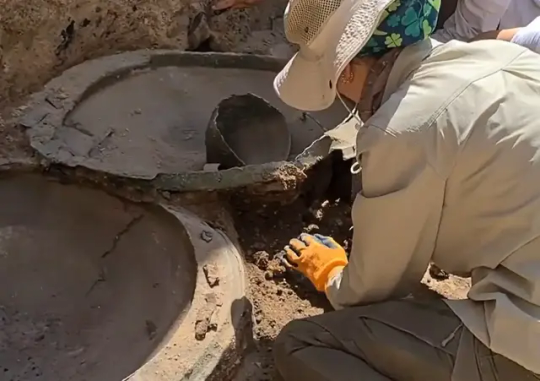
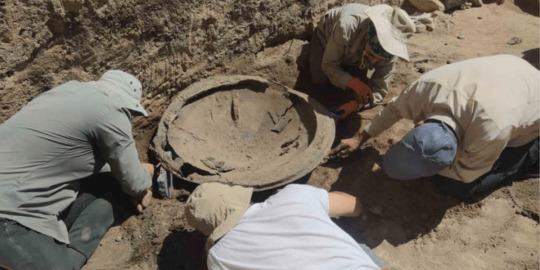
2,700-Year-Old Urartu bronze Shields and Helmet Discovered in Turkey
Three bronze shields and a bronze helmet dedicated to Haldi, the chief god of the Urartians, were discovered during excavations at the Ayanis Castle in Van province in eastern Türkiye.
The discovery was announced on the social media account of Mehmet Nuri Ersoy, Minister of Culture and Tourism.
Ayanis Castle was built on a rocky hill close to Ağartı village whose old name was “Ayanis” and situated on the east bank of Lake Van, 38 km east of the capital Tuşpa.
Ayanis Castle, where the temple of Haldi, one of the most intact Urartian temples, is located, was built by the last great King of Urartu, Rusa II, in the mid-7th century BC. Written evidence shows that the fortress was destroyed by a major earthquake and associated fires 20 to 25 years after its construction.
In the Ayanis Castle, known to be the last castle of the Urartu Kingdom, the archeological excavations are ongoing since 1989. The excavations were conducted under the presidency of Prof. Dr. Altan Çilingiroğlu within the scope of Ege University “Van Project” until 2012. The studies are rendered by Prof. Dr. Mehmet Işıklı, associate in the Archeology Department, Literature Faculty, Atatürk University since 2013.

For the last few seasons, the excavation team has been trying to uncover the structures associated with the Haldi Temple in the citadel. In the 2024 excavation season, three bronze shields and a bronze helmet dedicated to Haldi, the chief god of the Urartians, were unearthed. The artifacts found during the excavations in the monumental temple complex dedicated to the god Haldi reflect the richness of Urartian metalwork.
Prof. Dr. Mehmet Işıklı said in his statement, ‘In this year’s excavations, we unearthed 3 bronze shields and 1 helmet, which were found in very good condition. The shields and helmet are dedicated to Haldi, the chief god and god of war. As you know, Ayanis Castle suffered a great earthquake. Because of this earthquake, there is a big collapse caused by the mudbrick walls. many artifacts are deformed because of this. but the artefacts found are in very good condition because they were found on the floor of the room at a depth of about 6-7 meters. Of course, we have some minor fractures and we will complete these with restoration and conservation.’

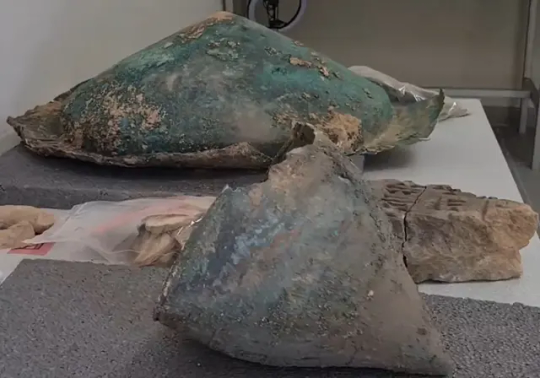
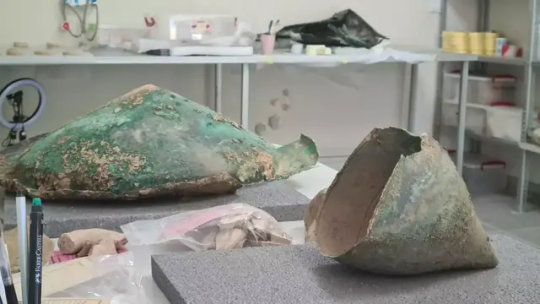

“There is also a bronze helmet among the artifacts found. We guess that it is a decorated and ceremonial helmet. Because we can see some decorations now, of course, it will be possible to see these ornaments and decorations more clearly after a comprehensive restoration and conservation,” he added.
Professor Işıklı stated that there is strong evidence that the site was used by a royal and religious elite group. After 36 years of excavations, the Ayanis fortress has yielded a rich collection of bronze artifacts, especially bronze weapons. To date, more than 30 bronze shields have been unearthed during the excavations of the castle.
By Leman Altuntaş.
#2700-Year-Old Urartu bronze Shields and Helmet Discovered in Turkey#Ayanis Castle#temple of Haldi#Haldi#Urartu Kingdom#Rusa II#bronze#bronze weapons#bronze artifacts#ancient artifacts#archeology#archeolgst#history#history news#ancient history#ancient culture#ancient civilizations
45 notes
·
View notes
Text

Standing bronze bull statue from Anatolia - approximately 3000 BCE
#bronze age#iron age#ancient history#historic#history#cute#art#anatolia#mesopotamia#ancient#archaeology#stone age#art history#artifacts
523 notes
·
View notes
Text

Roman Bronze Ring with Galley Intaglio, c. 1st-4th century AD
80 notes
·
View notes
Text




2200-2000 BC, Baluchistan (Eastern Iran/Pakistan
Copper
Circular support comprising two identical groups with naked hunter grabbing the leg of a wild boar and dog biting its ear.
38 notes
·
View notes
Text

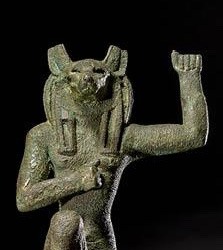

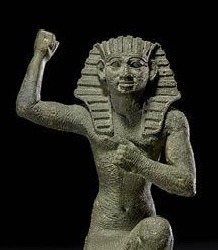
Three kneeling figures in poses of jubilation, c. 715-332 BCE. Late Period. Egypt. Bronze
#egyptian art#ancient egypt#ancient art#bronze statue#antiquities#ancient artifacts#artifacts#aesthetic#ancient history#ancient people#egyptian history#egyptian culture#egyptology#egypt#egyptian#art history#aesthetictumblr#tumblraesthetic#tumblrpic#tumblrpictures#tumblr art#tumblrstyle#artists on tumblr
287 notes
·
View notes